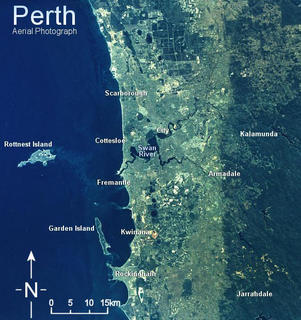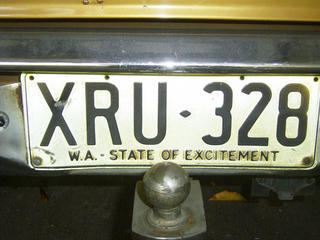
9. It's still rock n roll to me.
It can be seen that gang culture apparently plays a large role in Western Australian culture. It is a lawless place with as many fleets of shotgun wielding bogans on Harley Davidson’s as there are kangaroos, or as many armed and highly trained street fighting ninjas as there are New Zealander’s on the dole. That’s what the media would have you believe. According to the West (see Press Watch), we are almost as bad as prohibition era Chicago run by Al Capone and protected by Kevin Costner. Are they right?
A 2000 report by the Australian Institute of Criminology (AIC ) suggested that “the phenomenon of ‘criminal youth gangs’ is largely a media myth” and that “’youth gangs’ as such do not constitute a significant social problem”, though they agree there is some tendency towards criminality. It may be argued that things have moved on since then. To some extent, this seems likely. Racism was cited as the main cause of inter-gang conflict, whereas now it appears to be related to racism and drug trafficking.
But is it a serious problem or one of context? The West Australian report from 16th August suggests that Sydney has 10 organised crime gangs and Melbourne 8 to Chicago’s 4 and Perth’s 3. That means Perth is roughly equivalent to the other capitals on a per capita basis. One cannot assume that US statistics are gathered in the same way as here, so inter-country comparisons are meaningless.
There are several other things to note. Firstly, the West Australian’s sensationalist and absolute headline: ‘Perth home to criminal gangs’.There is no mention of the outside world. Secondly, it is only mid way through the article that the above quoted and relative numbers are revealed and they are not given any appropriate context to inspire free thought. Thirdly, there is no mention of who the three gangs are.
Why the rise of gangs in the eyes of media hysteria? Certainly it seems that the incidence of public weapon use in gang related incidents may be increasing. However, as the AIC report argues, “The resultant waves of race-based public panic are customarily triggered by the sensationalised reporting of atypical events. This reporting tends to reinforce the ‘ethnic’ character of the criminal activity in question, based on the ‘racial’ background of the perpetrators—alleged gang members.” Use of weapons is, overall, atypical and therefore exaggerated. Because of the alleged ethnicity of gangs, they then become easily identifiable and more capable of causing panic.
Former gang member Perth Boi : described to me, the fearless and quixotic Ramon Miguel Cadorna, in a Dog Swamp all-night burger bar the history of Perth gangs:
“Well originally there was two gangs starting around the early 80s, one the Dragon Boyz which were made up of a group of Vietnamese friends after one of their friends was stabbed to death and they wanted to form a justice, and a second called the Sword Boyz which was formed when the idea to form the gang came from Sydney… Around the early 1990s a new gang called the Embros [M’Bros] formed. In the mid-90s a lot of gang members attended the school Mt. Lawley, even some of the members of the Morley Boyz (Group of friends all living around the Morley area) which later on developed into Spider Boyz. A stabbing in 2001 ended [Spider Boyz leader’s] winning streak, he was locked up after his stabby bled to death in High Park. Later on they [descendents of the original Spider Boyz gang] became more organised and started keeping a low profit, changing their habits of fighting to dealing drugs over a large scale.”
The rise of gang incidents in the media suggests that racial minorities have reached a critical mass and require the expression of their own subculture. A new phenomenon in Perth perhaps? Yes, in terms of association of gangs with a particular ethnic group and not your average Aussie bogan bikers. It suggests then, that Perth is in a state of change and that some new elements of culture and identity are coming to the surface. It is a significant juncture for measuring the energy levels and ascertaining a state of excitement. But otherwise, gangs are as new as the concept of the ‘teenager’.
“In America, they were called rockers, in the UK, teddy boys. In Australia, we called the boys bodgies and their girlfriends widgies. Bodgie comes from the word 'bodger', meaning someone worthless, and they defined themselves with their clothes and their hair.” From Dimensions
The Australian 50’s gangs of Bodgies and Widgies were subject to the same media hysteria as modern gangs are, particularly in Perth. “Without recourse to reliable statistics, many people embraced the opinion that a substantial proportion of the country’s teenagers were uncontrollable. Some advocated punishments such as sending ‘bodgies to the Nullarbor to work on a rail gang’ (Perth Daily News, 7 October, 1957), sending them ‘to sea under a tough [navy] skipper’ (Perth Daily News, 16 November, 1957) and inflicting harsh corporal punishment upon them.” Note a reference here to the requirement for ‘reliable statistics’.
 Group activity is designed to facilitate a social connection. Common social ground exists for a number of well described reasons: socioeconomic, to establish identity, particularly in emerging racial groups, as well as boredom. “When combined with the lack of alternative recreational outlets and the consequent boredom experienced, feelings of exclusion may actually lead to various kinds of “deviant” behaviour.” (from AIC report). Insufficient
Group activity is designed to facilitate a social connection. Common social ground exists for a number of well described reasons: socioeconomic, to establish identity, particularly in emerging racial groups, as well as boredom. “When combined with the lack of alternative recreational outlets and the consequent boredom experienced, feelings of exclusion may actually lead to various kinds of “deviant” behaviour.” (from AIC report). Insufficient  transport and recreational facilities is cited as a major cause of boredom in 58% of people interviewed in the AIC survey. Perth’s public transport at least is notoriously sub-standard (to be addressed later), so boredom is probably a genuine concern. Gangs can therefore be considered in one sense a symptom of a state of unexcitement and in another, a state of excitement. Its not a new phenomenon, but implies a state of transition.
transport and recreational facilities is cited as a major cause of boredom in 58% of people interviewed in the AIC survey. Perth’s public transport at least is notoriously sub-standard (to be addressed later), so boredom is probably a genuine concern. Gangs can therefore be considered in one sense a symptom of a state of unexcitement and in another, a state of excitement. Its not a new phenomenon, but implies a state of transition.















 We lined up for a good hour. It was close to eleven now, but at least the bar was open until 1am. Like the Subiaco Hotel, there was a high lycra component to the waiting crowd and the smell of aftershave and perfume was thick and nebulous. A drunk man walked passed us, being helped by a friend. ‘Muddies! Muddies!’ he yelled out at us all in disgust. At last we reached the front of the queue.
We lined up for a good hour. It was close to eleven now, but at least the bar was open until 1am. Like the Subiaco Hotel, there was a high lycra component to the waiting crowd and the smell of aftershave and perfume was thick and nebulous. A drunk man walked passed us, being helped by a friend. ‘Muddies! Muddies!’ he yelled out at us all in disgust. At last we reached the front of the queue.













